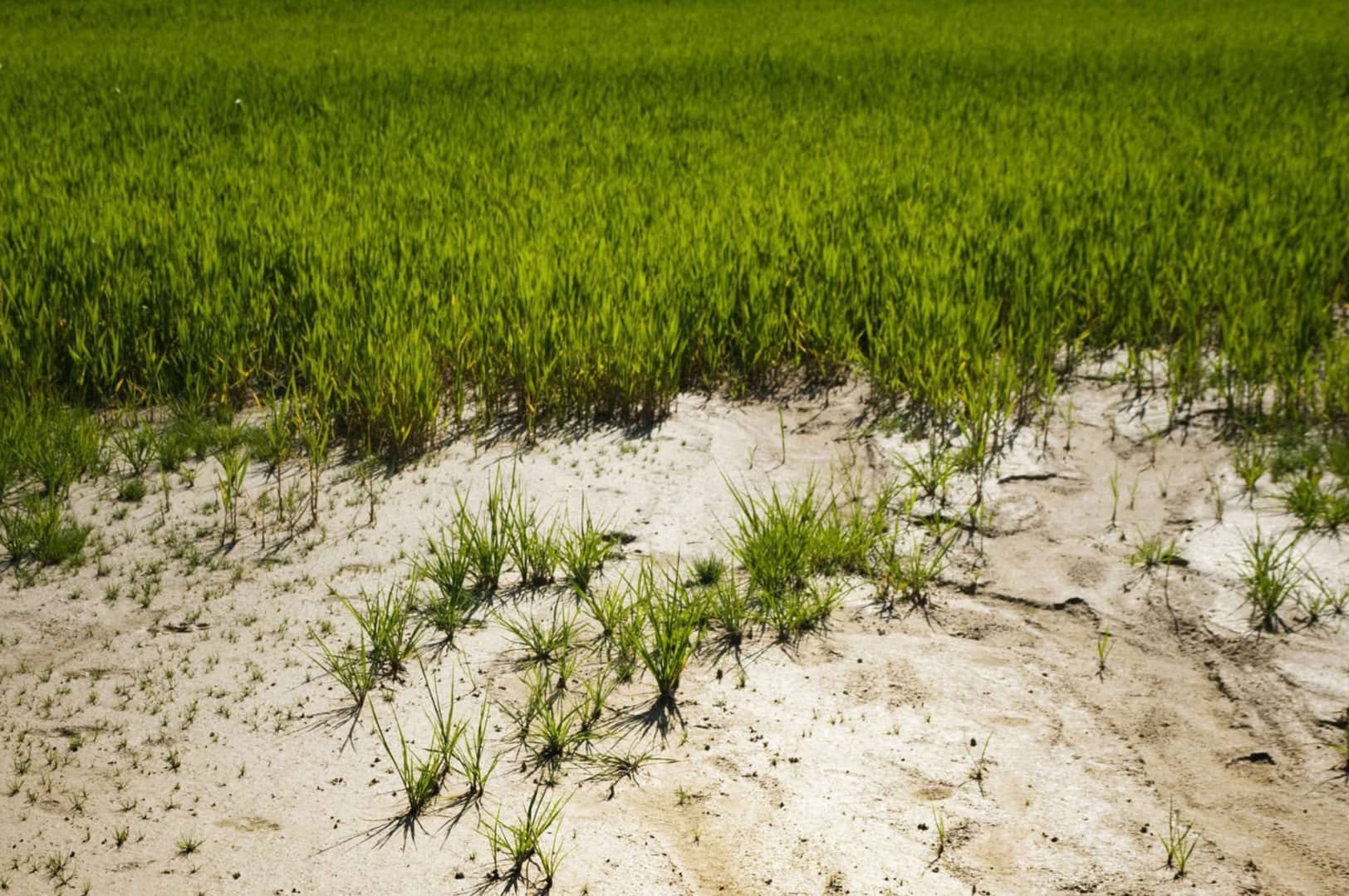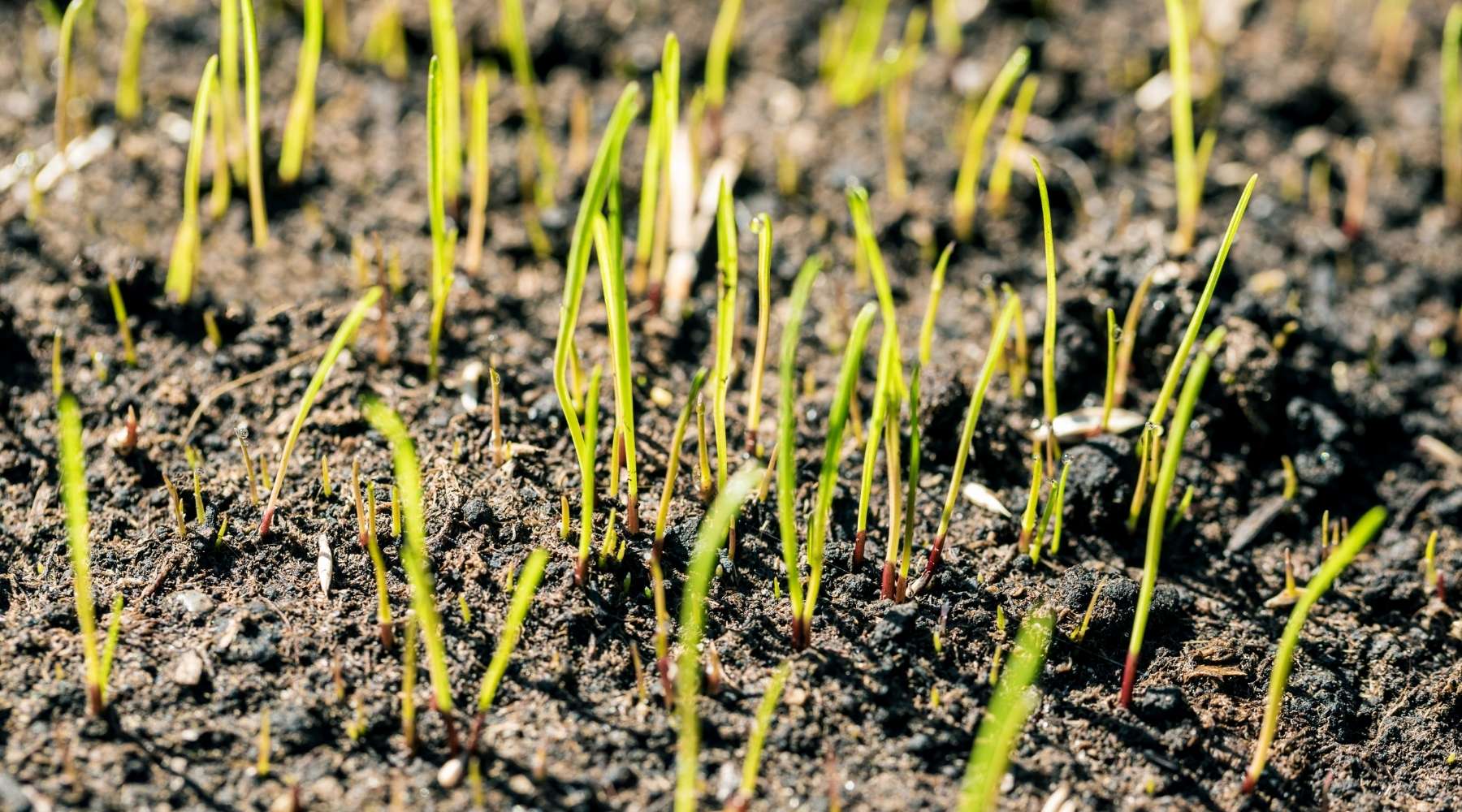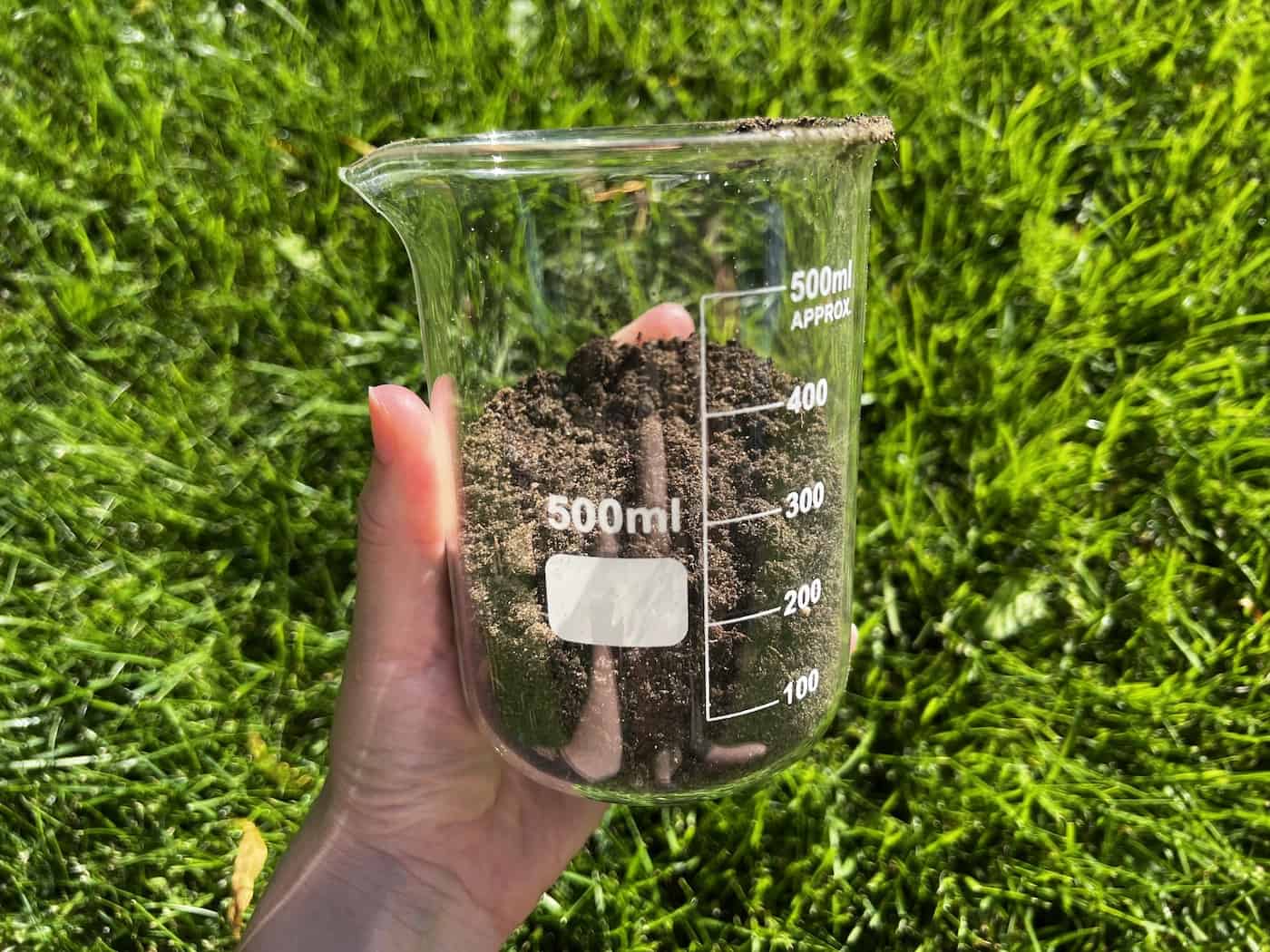Home>Gardening & Outdoor>Landscaping Ideas>How To Plant Grass In Sandy Soil


Landscaping Ideas
How To Plant Grass In Sandy Soil
Modified: September 2, 2024
Learn effective landscaping ideas for planting grass in sandy soil. Discover tips and techniques to create a lush, healthy lawn in your sandy environment.
(Many of the links in this article redirect to a specific reviewed product. Your purchase of these products through affiliate links helps to generate commission for Storables.com, at no extra cost. Learn more)
Introduction
Welcome to the world of landscaping, where the canvas is the earth and the paintbrush is your creativity. One of the most rewarding projects for any landscape enthusiast is transforming sandy soil into a lush, vibrant green lawn. While sandy soil presents unique challenges, it also offers opportunities for creating a thriving grassy haven.
In this guide, we will explore the nuances of planting grass in sandy soil. From understanding the characteristics of sandy soil to selecting the right grass species and implementing effective planting and maintenance techniques, we will cover every aspect of this transformative process. By the end, you will be equipped with the knowledge and confidence to turn your sandy patch into a stunning green oasis.
Key Takeaways:
- Transform sandy soil into a lush lawn by choosing drought-tolerant grass, enriching the soil with nutrients, and providing consistent, light watering for healthy growth.
- Embrace the unique qualities of sandy soil to create a thriving grass landscape, from selecting the right grass species to strategic planting and tailored maintenance.
Read more: What Grass To Plant In Sandy Soil
Understanding Sandy Soil
Before delving into the process of planting grass in sandy soil, it’s crucial to comprehend the unique properties of this soil type. Sandy soil is characterized by its larger particle size and gritty texture. This results in excellent drainage, which can be both a blessing and a challenge for growing grass.
One of the key benefits of sandy soil is its ability to prevent waterlogging, making it ideal for areas with heavy rainfall. However, its quick drainage also means that nutrients can easily leach away, posing a potential hurdle for sustaining healthy plant growth.
Furthermore, sandy soil tends to have a lower water retention capacity, requiring more frequent irrigation, especially during dry spells. Understanding these characteristics is essential for selecting the right grass species and implementing appropriate soil preparation and maintenance techniques.
While sandy soil may seem daunting at first, it offers opportunities for creative landscaping and can provide a suitable foundation for specific grass varieties. With a solid understanding of its properties, you can harness the unique qualities of sandy soil to cultivate a thriving lawn that defies its perceived limitations.
Choosing the Right Grass
When it comes to planting grass in sandy soil, selecting the appropriate grass species is paramount to the success of your lawn. Not all grass varieties are well-suited to the unique characteristics of sandy soil, so it’s essential to choose wisely.
One of the key considerations when choosing grass for sandy soil is drought tolerance. Given the lower water retention capacity of sandy soil, opt for grass species that are resilient in dry conditions. Bermuda grass, Zoysia grass, and Buffalo grass are excellent choices, known for their ability to thrive in sandy soil and withstand periods of drought.
Additionally, consider the nutrient requirements of the grass species. Since sandy soil has a propensity to lose nutrients more rapidly, selecting grass varieties that are adaptable to nutrient-poor conditions is advisable. These grasses can efficiently utilize available nutrients, ensuring healthy growth despite the soil’s natural tendencies.
Furthermore, assess the sun exposure in your lawn area. Some grass species are better suited to full sun, while others thrive in partially shaded environments. By aligning the grass selection with the specific sunlight conditions of your lawn, you can optimize the growth and vibrancy of the grass, enhancing the overall appeal of your landscape.
Ultimately, the right grass species for sandy soil should exhibit a balance of drought tolerance, nutrient efficiency, and compatibility with the prevailing sunlight conditions. By carefully considering these factors, you can lay the foundation for a resilient and visually captivating lawn that flourishes in sandy soil.
Preparing the Soil
Effective soil preparation is a fundamental step in ensuring the successful establishment of grass in sandy soil. While sandy soil offers excellent drainage, it is essential to enhance its nutrient retention capacity and provide an optimal foundation for the grass to take root and thrive.
Begin by conducting a soil test to assess the nutrient levels and pH of the sandy soil. This valuable insight will guide the application of soil amendments to address any deficiencies and create an environment conducive to healthy grass growth. Organic matter, such as compost or well-rotted manure, can be incorporated into the sandy soil to bolster its nutrient content and improve its water retention capabilities.
Furthermore, consider the application of a balanced fertilizer specifically formulated for sandy soil. These fertilizers are designed to replenish essential nutrients while accounting for the soil’s unique characteristics. By enriching the soil with the necessary nutrients, you can provide a solid foundation for the grass to establish strong, healthy roots and thrive in the sandy environment.
In addition to addressing nutrient concerns, proper soil preparation involves ensuring adequate soil compaction and leveling. This can be achieved through careful tilling and raking, creating a uniform and receptive surface for planting the grass seeds. By meticulously preparing the soil, you set the stage for optimal seed-to-soil contact, which is crucial for germination and the initial stages of grass growth.
Lastly, consider the incorporation of a quality starter fertilizer at the time of planting to provide an immediate nutrient boost for the emerging grass seedlings. This strategic approach can enhance the early growth stages, fostering robust and resilient grass development in the sandy soil.
By diligently preparing the sandy soil through targeted soil amendments, proper compaction, and the application of suitable fertilizers, you can lay a solid groundwork for the successful establishment of a thriving grass lawn, despite the inherent challenges of sandy soil.
Add organic matter such as compost or peat moss to sandy soil to improve its water retention and nutrient content before planting grass. This will help the grass establish a strong root system.
Planting the Grass Seeds
Once the sandy soil has been meticulously prepared, it’s time to embark on the exciting process of planting the grass seeds. This phase is pivotal in establishing a dense and vibrant lawn that thrives in the unique environment of sandy soil.
Begin by selecting high-quality grass seeds that are well-suited to sandy soil and align with the specific requirements of your landscape, such as sun exposure and climate conditions. Opt for reputable seed varieties known for their resilience and adaptability, ensuring a strong foundation for your grass lawn.
When it comes to planting the grass seeds, the timing is crucial. Aim to sow the seeds during the optimal growing season for your chosen grass species, providing the seeds with favorable conditions for germination and early growth. Ensure that the soil temperature and moisture levels are conducive to seed establishment, setting the stage for successful germination and the emergence of healthy seedlings.
For even distribution and optimal coverage, consider using a seed spreader to sow the grass seeds evenly across the prepared soil surface. This meticulous approach promotes uniform growth and minimizes the risk of patchy or sparse areas in the emerging lawn.
Following the seeding process, gently rake the soil to ensure proper seed-to-soil contact, a critical factor for successful germination. This step facilitates the absorption of moisture and nutrients by the seeds, fostering robust root development and the initial stages of grass growth in the sandy soil.
Once the grass seeds are sown and the soil is carefully prepared, it’s essential to provide consistent and adequate moisture to support germination and early growth. Regular, light watering is recommended to keep the soil consistently moist without causing waterlogging, fostering an ideal environment for the seeds to germinate and the young seedlings to establish themselves.
By diligently following the best practices for planting grass seeds in sandy soil, you can set the stage for the emergence of a lush, resilient lawn that defies the perceived limitations of sandy terrain, transforming it into a captivating green expanse.
Read more: What Grass Grows In Sandy Soil
Watering and Maintenance
Proper watering and consistent maintenance are essential components of nurturing a healthy and vibrant grass lawn in sandy soil. With its quick drainage and lower water retention capacity, sandy soil requires a strategic approach to watering and ongoing care to ensure the sustained health and vigor of the grass.
When it comes to watering, a frequent and light watering schedule is recommended, especially during the establishment phase and dry periods. This approach helps maintain adequate soil moisture without saturating the sandy soil, promoting healthy root development and robust grass growth. However, it’s crucial to monitor the moisture levels closely, adjusting the watering frequency based on the specific needs of the grass and the prevailing weather conditions.
Implementing a deep watering schedule once the grass is established can encourage the development of strong, deep roots, enhancing the resilience of the lawn in sandy soil. Deep watering promotes root growth downward, enabling the grass to access moisture from deeper soil layers, mitigating the effects of rapid water drainage characteristic of sandy terrain.
Furthermore, regular monitoring of the lawn’s health and growth is essential for timely intervention and maintenance. Keep an eye out for signs of stress, such as discoloration or wilting, and address any issues promptly. This may involve targeted fertilization, addressing nutrient deficiencies, or implementing pest and weed control measures to safeguard the vitality of the grass in sandy soil.
Mowing practices play a crucial role in maintaining the health and appearance of the grass lawn. Adjust the mower height to accommodate the specific grass species and ensure that no more than one-third of the grass blade is removed in a single mowing session. This approach promotes healthy growth and helps the grass withstand the unique challenges posed by sandy soil.
Lastly, consider incorporating a regular maintenance schedule that includes aeration to alleviate soil compaction and facilitate nutrient absorption, as well as overseeding to promote density and resilience in the lawn. By staying attuned to the evolving needs of the grass and the sandy soil, you can nurture a vibrant and enduring lawn that flourishes in its sandy habitat.
Conclusion
Embarking on the journey of planting grass in sandy soil presents a unique opportunity to transform a seemingly challenging landscape into a flourishing green haven. By understanding the distinct properties of sandy soil, selecting the right grass species, and implementing effective soil preparation and maintenance techniques, you can cultivate a vibrant and resilient lawn that defies the perceived limitations of sandy terrain.
Throughout the process, it’s essential to embrace the inherent qualities of sandy soil, leveraging its excellent drainage and unique characteristics to create a thriving grass landscape. From the selection of drought-tolerant grass species to the meticulous preparation of the soil and the strategic planting of grass seeds, every step contributes to the establishment of a resilient and visually captivating lawn in sandy soil.
Watering and maintenance practices tailored to the specific needs of grass in sandy soil play a pivotal role in nurturing a healthy and enduring lawn. By adopting a proactive approach to monitoring soil moisture, addressing nutrient requirements, and implementing consistent maintenance, you can sustain the vitality and lushness of the grass, ensuring its long-term success in the sandy environment.
As you witness the transformation of the sandy patch into a verdant oasis, take pride in the creative landscaping journey that has unfolded. The lush expanse of grass serves as a testament to your dedication and understanding of the intricacies of sandy soil, culminating in a stunning landscape that defies expectations and captivates the senses.
In the realm of landscaping, every terrain presents an opportunity for innovation and creativity. Planting grass in sandy soil is not merely a project; it’s a testament to the transformative power of thoughtful planning, strategic decision-making, and a deep appreciation for the natural world. As you revel in the beauty of your lush, green lawn, remember that it is a testament to your expertise and passion for creating vibrant landscapes that thrive in every environment.
Frequently Asked Questions about How To Plant Grass In Sandy Soil
Was this page helpful?
At Storables.com, we guarantee accurate and reliable information. Our content, validated by Expert Board Contributors, is crafted following stringent Editorial Policies. We're committed to providing you with well-researched, expert-backed insights for all your informational needs.















0 thoughts on “How To Plant Grass In Sandy Soil”